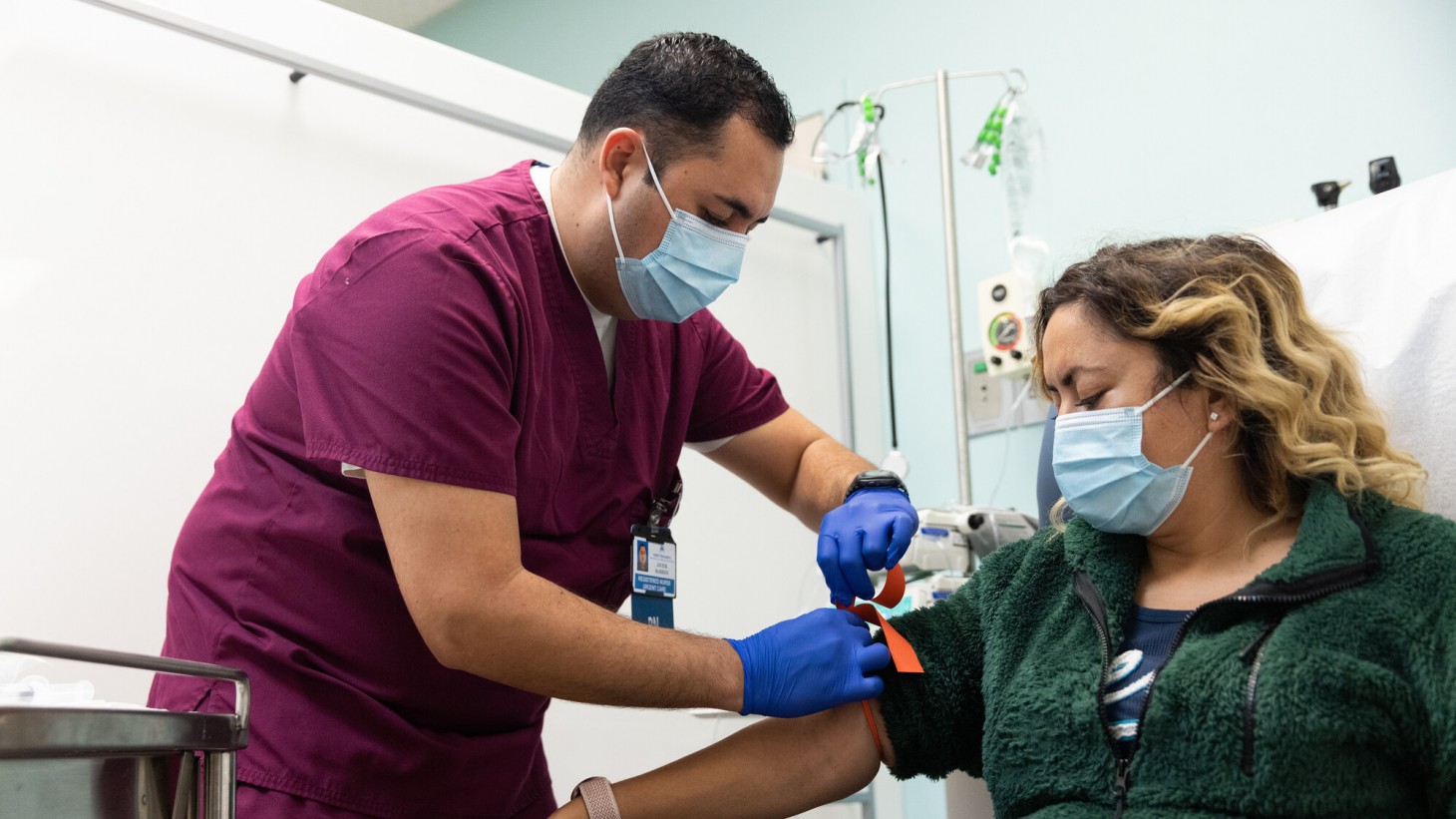
Javier Barrios, RN, UNAC/UHCP member, assists patient Paula Ramirez at Panorama City Medical Center in Southern California. Barrios and his unit-based team came up with a plan to reduce rising sick calls and combat staff burnout.
Avoid burnout: plan time off, use sick days for illness
It was a vicious cycle: As last-minute sick calls surged, so did overtime costs and burnout among staff working extra shifts in Urgent Care at Panorama City Medical Center in Southern California.
The sick calls “impacted our entire team on multiple fronts,” said Fisayo Bhebe, department manager.
So UBT members came up with a plan. They realized that people were more likely to call in sick when work was stressful. So they urged employees to schedule time off in advance and save their sick days for illness.
Department leaders were then able to plan and maximize staffing resources – reducing stress and burnout for workers. They also rewarded those with outstanding attendance.
And, after realizing patient volumes were rising, they reviewed the budget and hired more staff. Over 10 months, last-minute sick calls dropped 40%, from an annual average of 4 days to 2.5 days per full time employee.
“Every member of the team contributed to the success of this project,” said Rosimar Carpenter, an LVN and Coalition union partnership representative. “You can definitely see how proud they are.”
A two-pronged approach
The Level 3 team includes employees represented by the Alliance of Health Care Unions and the Coalition of Kaiser Permanente Unions. They staff Urgent Care, a fast-paced department that can receive as many as 300 patients a day, 7 days a week.
Sick calls mean paying overtime to employees available to fill staffing gaps and take on extra shifts. When replacements can’t be found, staff members work short-handed as patients keep coming.
“It can be a continuous loop,” said Javier Barrios, RN, a member of UNAC/UHCP. “When people are out you carry a heavier load and it makes the day feel a lot longer.”
In 2022, challenged by last-minute sick calls, members of the unit-based team began exploring ways to reduce such calls and ensure staff members got time off. They took a two-pronged approach: partnering with leadership to bring in per-diem workers to plug staffing gaps and focusing on last-minute sick calls during UBT meetings.
Team co-leads ─ Jeanelle Concepcion, RN Supervisor, and Teresita “Tita” Obusan, an LVN and SEIU-UHW member ─ were sympathetic to the team’s struggles. They encouraged team members to plan time off in advance to avoid last-minute staffing scrambles. They also recognized workers for outstanding attendance.
Excited to work
The strategy worked. The team met its 6-month target to reduce last-minute sick calls from an annual average of 4 days to 3 days per full time employee.
What’s more, success came despite surging service demands. Member visits to the department increased by 20% in 2022 over the previous year. After reviewing the budget, the department received authorization to hire 3 new part-time licensed vocational nurses to handle the increased patient volume.
Last-minute sick calls continue to drop. In November 2022, the team recorded an annual average of 2.5 days per full time employee – a 40% reduction over 10 months.
Even better, the sense of burnout has waned. Said Obusan, “We feel less burdened and are excited again to come to work.”
